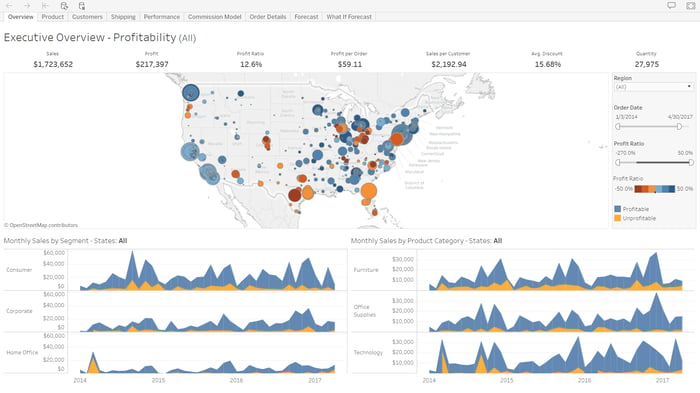It’s about DOING!
Ok…so what is it you’re trying to DO with data visualization?
After the sale, what’s the thing you’re trying to bring into being that couldn’t be done without the commitment you’ve made to this product? Well, maybe it could be done without this product, but - not as quickly? not as clearly? not as consistently? not distributed as broadly? What are your expectations around data visualization? In your emerging role as "Champion of Visualization", can you identify a tactical goal for implementation?

Questioning expectations should help you discern the most expedient path to implementation. And questioning the answers you receive will help to identify which operational changes can best be realized within your user community. Taking on new technology can be exciting, optimistic, and fun. But for that technology to bring about improvements, you will need to lay out a trajectory of tactical steps that will incrementally achieve the practical gains you have in mind. How have you expressed your own expectations? Have those expectations been articulated for or by your end users? Steer your questioning into Use Case expressions that drive the mission of the dashboard design. One template I learned a few years ago, works very well:
“I want a ___<Deliverable>______
So that I can ___<Benefit>______ “
The Use Case statements define and constrain the scope of the dashboard design. It also identifies the action item and follow-up expectation of the user. This format is useful because is provides a named deliverable, followed by the identification of specific beneficial outcomes that derive from the introduction of the new reporting object.

Visualizations should be applied to solving problems. They should extend or reveal insight to data that would otherwise go unrecognized. They should illuminate context, and while responding to known issues, may even identify new ones. But successful visual problem-solving is dependent on recognizing the needs and priorities of the end-users. So consider the tenet that visualizations should bring specific benefit to their users.
Know the user you serve
It may be controversial to say so, but I take the position to call for dashboard development that targets improved service delivery to and for the end-user. But, doesn’t everyone? Well, honestly, no. It happens more often than not that visualization initiatives start out with data explorations, aimed at exercising the latest techie features of a tool, or recreating examples that were promoted at a product sales event. But doing this consumes precious time in the workplace and delivers negligible quantifiable benefit. Instead, I encourage implementers to identify an issue, a challenge, or a problem of data exposition and develop a project to illustrate and correct it. Ask ‘who knows about it’, ‘who is affected by it’, and ‘who can best effect a correction’.
Projects selected and prioritized with the end-users perspective in mind will not only educate your organization about the merits and benefits of the technology change, they will lay out a trajectory designed to realize the return on investment that was promised. This is the next tenet of visual design: Know the user you serve.

- Vince McCoy, Principal Consultant
About WIT
WIT is an analytics and automation consulting firm with over 25 years of experience. We help our clients build solutions to maximize the value of their data and analytics assets, and automate key business processes. In partnership with elite software companies, WIT’s capabilities span a broad spectrum of business functions and industry verticals. Learn more at www.witinc.com
